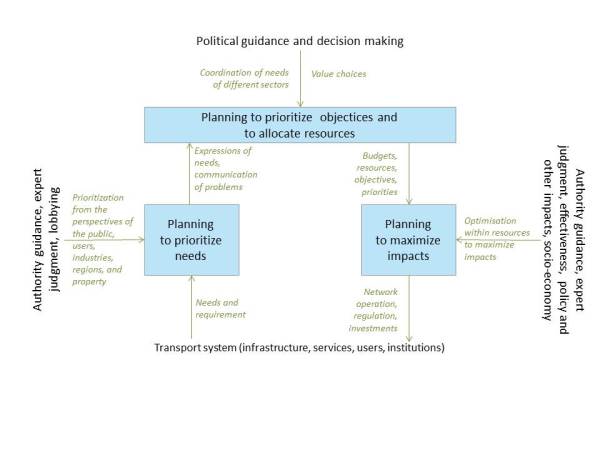
Road Network Operations
& Intelligent Transport Systems
A guide for practitioners!

Road Network Operations
& Intelligent Transport Systems
A guide for practitioners!
The context for deployment of ITS is the basic organisational, regulatory and institutional framework within which system development and service set-up take place. It will shape the environment within which the different ITS services are developed, deployed, operated and maintained. A well planned set-up which is accepted by all key stakeholders will improve the commercial and public sector business cases - with appropriate risk distribution, cost-sharing, service pricing and optimal quality delivery. (See Legal and Regulatory Issues)
In practice the context for deployment is constantly changing due to technological breakthroughs, and political, economic, environmental and demographic trends - which affect both the supply and the demand for ITS and other services. ITS deployment needs to be considered from a number of perspectives.
The market for ITS services, infrastructure and info-structure have been growing fast in areas such as navigation, tolling, driver support, telecommunications and digital mapping. The private sector, operating in the market, is constantly looking for a sound business case - in other words: sufficient revenue, return on investment and recovery of development and operating costs. Companies aim to build up demand for their services and products, increase the size of the market and their own share of the market - so their interests include:
The private sector will benefit from early knowledge of the public sector stakeholders' strategies and plans so they can respond appropriately to safeguard and advance their own interests. Companies follow closely, the development of markets, undertaking market research and analysis. They are usually able to make decisions and implement actions very quickly - often within a few months. This enables them to react to public sector strategic initiatives quickly - although planning processes do vary greatly amongst companies.
Road authorities and other public sector stakeholders plan their activities based on policy objectives and priorities. Some are directly transport-related such as road safety, congestion, traffic noise and emissions. Others arise from policy areas and objectives such as industrial competitiveness, climate change, energy sustainability and the information society.
Public sector planning usually involves three different time scales:
The planning processes, outlined in the figure below, includes the following stages:
To facilitate planning, public authorities need to create a framework for the socio-economic evaluation and impact assessment of ITS services - and apply it to before and after (ex-post and ex-ante) evaluation of the services deployed. (See Project Appraisal and Evaluation)

The role of the public sector in ITS service delivery needs to be reviewed regularly as part of the strategic planning process. In many countries the role of the public sector has changed during the past decade from being a service developer and provider to becoming an enabler and purchaser of ITS services. The public sector can create the right business framework by clarifying the institutional set-up and market conditions, including the regulatory requirements for ITS service deployments. This is especially important in countries with emerging economies.
Investment in ITS by the public sector needs to aligned with public policy and the current objectives for transport and mobility. These may change as the political landscape changes. This will affect the ITS planning phase when policy objectives are prioritised and resources allocated.
Those involved in strategic planning for ITS must keep the political perspective in mind - for example, where privacy concerns could lead to public opposition to an ITS deployment such as the introduction of new tolls and charges, requiring additional measures to protect data security and the privacy of financial transactions. In general, ITS is often “invisible” to the politicians and media until something goes wrong in its deployment, operation or use of ITS.